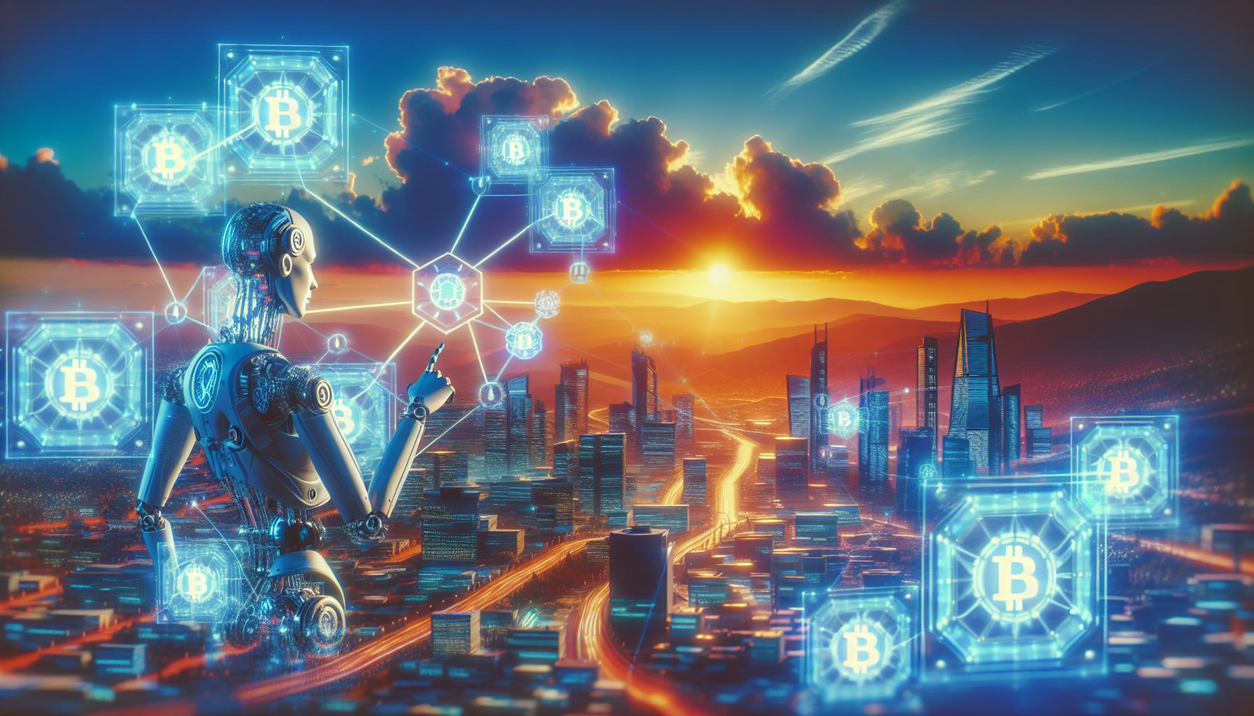Introduction to Peer-to-Peer Networks
Peer-to-peer (P2P) networks are decentralized networks where each participant, or peer, can act as both a client and a server. This architecture allows for direct data sharing between systems without the need for a central server. P2P networks are widely used in various applications, including file sharing, cryptocurrencies, and decentralized applications (dApps). The integration of artificial intelligence (AI) into these networks is enhancing their efficiency, security, and reliability.
AI Enhancements in P2P Networks
AI technologies are being leveraged to optimize data transfer in P2P networks. Machine learning algorithms can predict network congestion and reroute data to ensure faster and more reliable transfers. Additionally, AI can help in identifying and mitigating potential security threats, making P2P networks more secure.
AI in Cryptocurrencies
Cryptocurrencies like Bitcoin and Ethereum rely heavily on P2P networks for transaction validation and data sharing. AI can enhance these networks by optimizing the mining process, predicting market trends, and improving transaction speeds. This ensures a more efficient and secure cryptocurrency ecosystem.
Decentralized Applications (dApps)
Decentralized applications, or dApps, run on P2P networks and benefit significantly from AI integration. AI can help in managing the resources required for running these applications, ensuring they operate smoothly and efficiently. This is particularly important for applications that require real-time data processing.
Improving Network Security
Security is a critical concern in P2P networks. AI can enhance security by identifying unusual patterns of behavior that may indicate a security breach. Machine learning algorithms can continuously learn from network data, improving their ability to detect and respond to threats over time.
Robotic Process Automation (RPA)
Robotic Process Automation (RPA) involves the use of software robots to automate repetitive tasks. These robots can interpret, communicate, and analyze data, significantly improving operational efficiency. AI-driven RPA solutions are being adopted across various industries to streamline processes and reduce human error.
AI-Driven RPA Solutions
AI enhances RPA by enabling robots to handle more complex tasks that require decision-making and problem-solving. Machine learning algorithms can be used to train robots to recognize patterns and make predictions, allowing them to perform tasks that were previously beyond their capabilities.
Applications in Finance
In the finance industry, AI-driven RPA solutions are used to automate tasks such as data entry, transaction processing, and compliance reporting. This not only improves efficiency but also reduces the risk of human error, ensuring more accurate and reliable financial operations.
Healthcare Industry
The healthcare industry is also benefiting from AI-driven RPA solutions. Robots can automate administrative tasks such as patient data management, appointment scheduling, and billing. This allows healthcare professionals to focus more on patient care, improving overall healthcare delivery.
Manufacturing and Supply Chain
In manufacturing and supply chain management, AI-driven RPA solutions are used to optimize production processes, manage inventory, and streamline logistics. This leads to increased productivity, reduced costs, and improved supply chain efficiency.
Customer Service
AI-driven RPA solutions are transforming customer service by automating routine inquiries and support tasks. Chatbots and virtual assistants can handle customer queries, provide information, and resolve issues, ensuring a more efficient and satisfactory customer experience.
Human Resources
In human resources, AI-driven RPA solutions are used to automate tasks such as employee onboarding, payroll processing, and performance management. This not only improves efficiency but also ensures compliance with regulatory requirements.
Future Prospects
The integration of AI in P2P networks and RPA is still in its early stages, but the potential for future advancements is immense. As AI technologies continue to evolve, we can expect even more sophisticated and efficient solutions that will further enhance these systems.
Conclusion
AI is playing a crucial role in enhancing both peer-to-peer networks and robotic process automation. By optimizing data transfer, improving security, and automating complex tasks, AI is driving significant improvements in efficiency and reliability across various industries. The future of AI in these areas looks promising, with endless possibilities for innovation and growth.
References
1. “Artificial Intelligence: A Guide for Thinking Humans” by Melanie Mitchell
2. “Machine Learning: A Probabilistic Perspective” by Kevin P. Murphy
3. “Robotic Process Automation: Guide to Building Software Robots, Automate Repetitive Tasks & Become an RPA Consultant” by Richard Murdoch
4. “Blockchain Basics: A Non-Technical Introduction in 25 Steps” by Daniel Drescher
5. “AI and Machine Learning for Coders: A Programmer’s Guide to Artificial Intelligence” by Laurence Moroney
